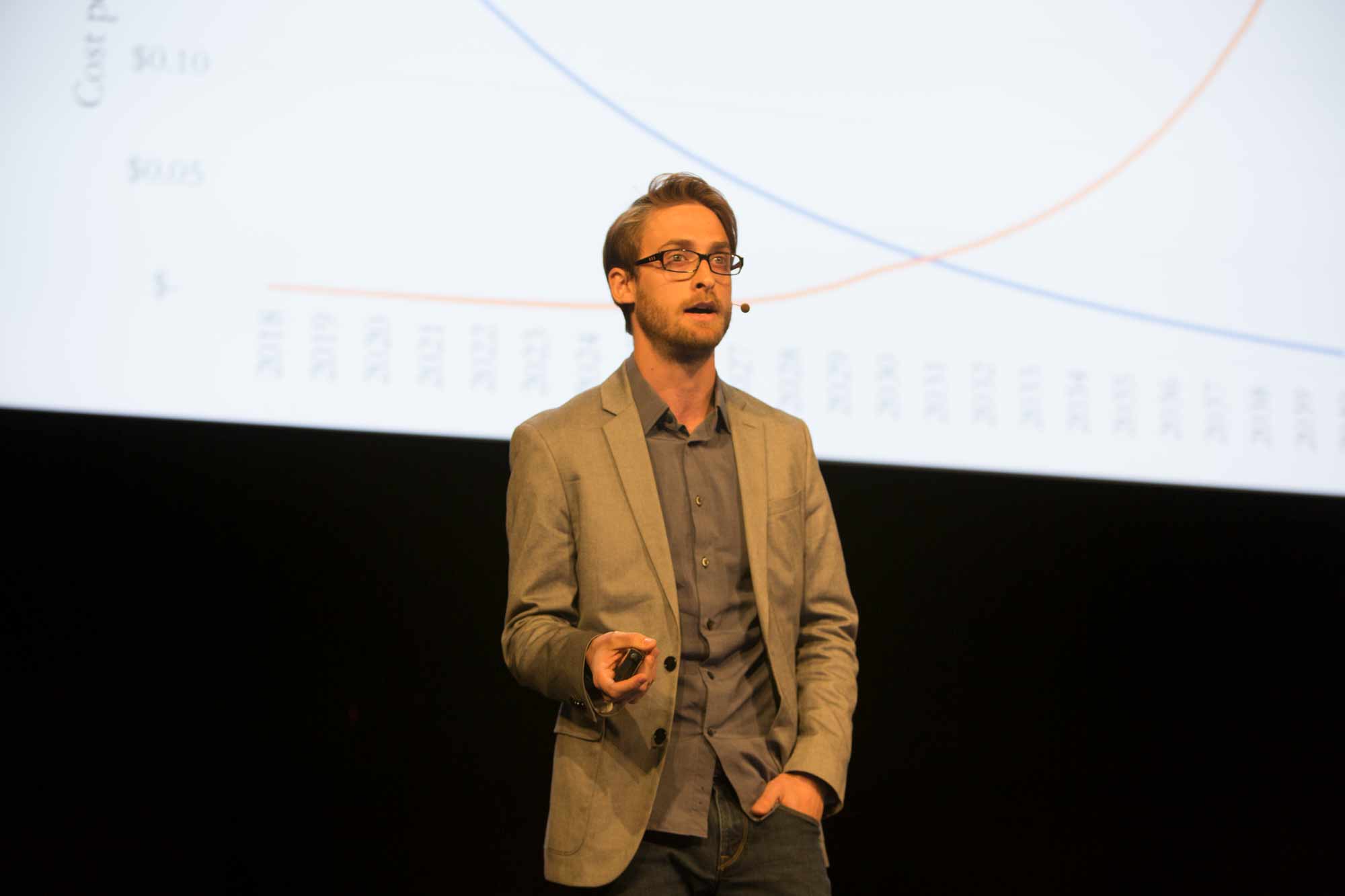The tricky art (and emerging science) of valuing crypto-assets

When Chris Burniske began evaluating crypto-assets professionally back in 2014, nobody on Wall Street wanted to talk about Bitcoin and similar systems, insisting that the assets hosted on these networks didn’t have much value. Now that the cryptocurrency market has gotten so big, thanks in large part to initial coin offerings, “the same people who largely have said these assets are worthless are now asking how much are these assets actually worth,” he says.
Answering that question is tricky, and the science is still emerging. A complicating factor is that there are several kinds of crypto-tokens, and while some resemble currencies, some are more like commodities (see “When the cryptocurrency bubble pops, these tokens are built to survive”). But thanks to pioneers like Burniske, financial analysts are starting to get their hands on real tools for determining the underlying value of blockchain networks. On stage at MIT Technology Review’s Business of Blockchain conference, Burniske, who has written a book on the topic, explained his approach to evaluating digital assets and shared some of the insights this approach has already generated.
How much is a given network worth compared with others? The metric that has emerged as the most common way to determine this is called the “network value–to–transactions ratio.” In this case, the network value is simply the number of coins in circulation multiplied by the price. “It’s not a market cap, because it’s not a company,” says Burniske. The network value is then divided by the “transaction value,” or the the dollar value that the underlying blockchain moves in transactions.
Transaction volume, says Burniske, is to crypto-assets what profit earnings are to the traditional equities world: if the stock market uses profit earnings to price shares, then cryptocurrency analysts should use transaction volume in the same way. This general approach to “relative valuation” can also be used to determine other things, he says, like the dollar value that goes into into securing each dollar stored on a given blockchain.
Compared with “relative valuation,” the science of determining the “intrinsic” value of crypto-tokens is more contentious, says Burniske. He disagrees with people who say crypto-assets do not have intrinsic value, an argument he says fails to account for the new “digital productivity” that blockchains have created. Though metrics are emerging to measure intrinsic value, the science is even less mature than that for determining relative value.
Burniske acknowledges that all of these approaches are an approximation of the truth:. “In this attempt to quantify, I think we will develop better understandings of these crypto-economies.”
Keep Reading
Most Popular
Large language models can do jaw-dropping things. But nobody knows exactly why.
And that's a problem. Figuring it out is one of the biggest scientific puzzles of our time and a crucial step towards controlling more powerful future models.
How scientists traced a mysterious covid case back to six toilets
When wastewater surveillance turns into a hunt for a single infected individual, the ethics get tricky.
The problem with plug-in hybrids? Their drivers.
Plug-in hybrids are often sold as a transition to EVs, but new data from Europe shows we’re still underestimating the emissions they produce.
Google DeepMind’s new generative model makes Super Mario–like games from scratch
Genie learns how to control games by watching hours and hours of video. It could help train next-gen robots too.
Stay connected
Get the latest updates from
MIT Technology Review
Discover special offers, top stories, upcoming events, and more.